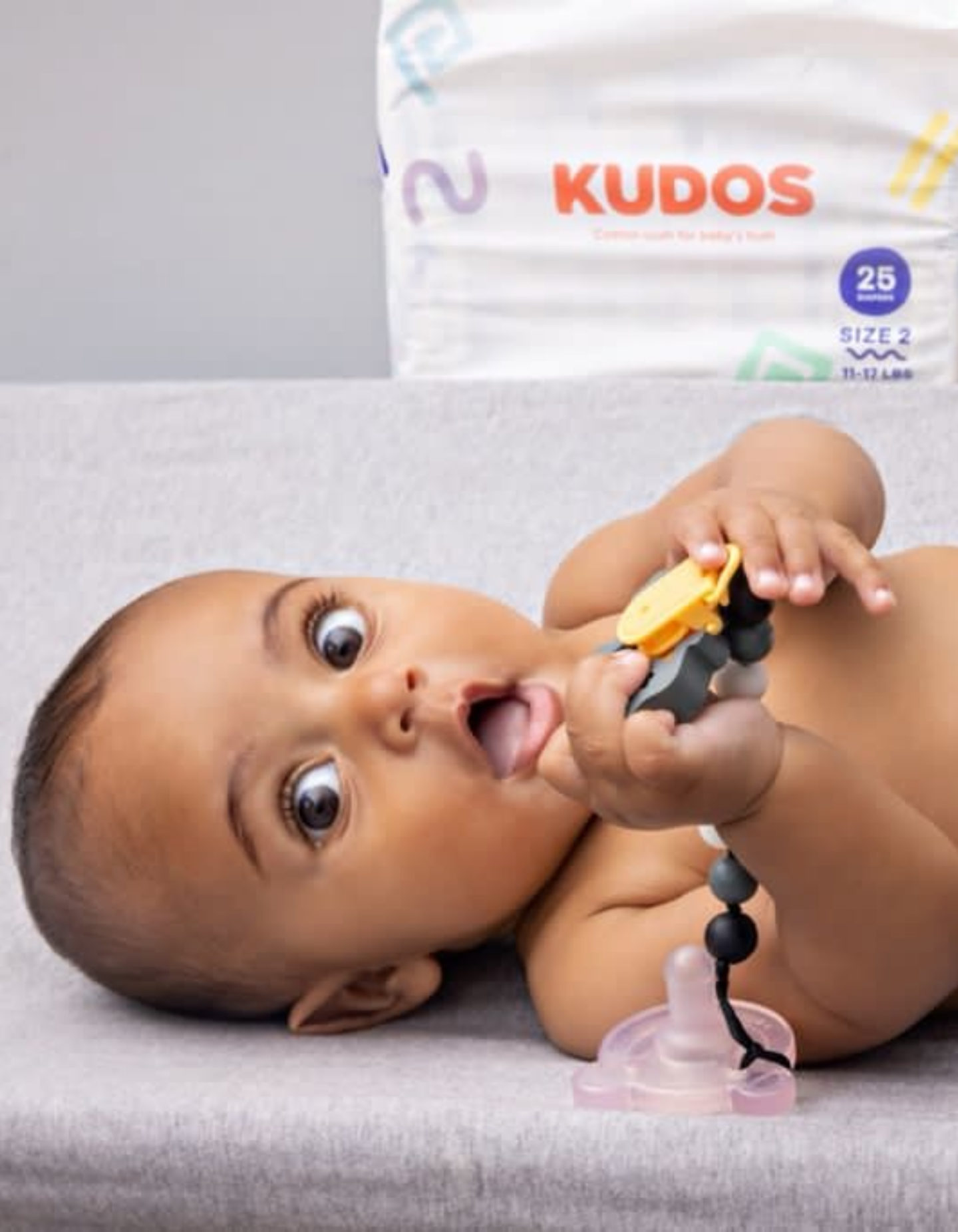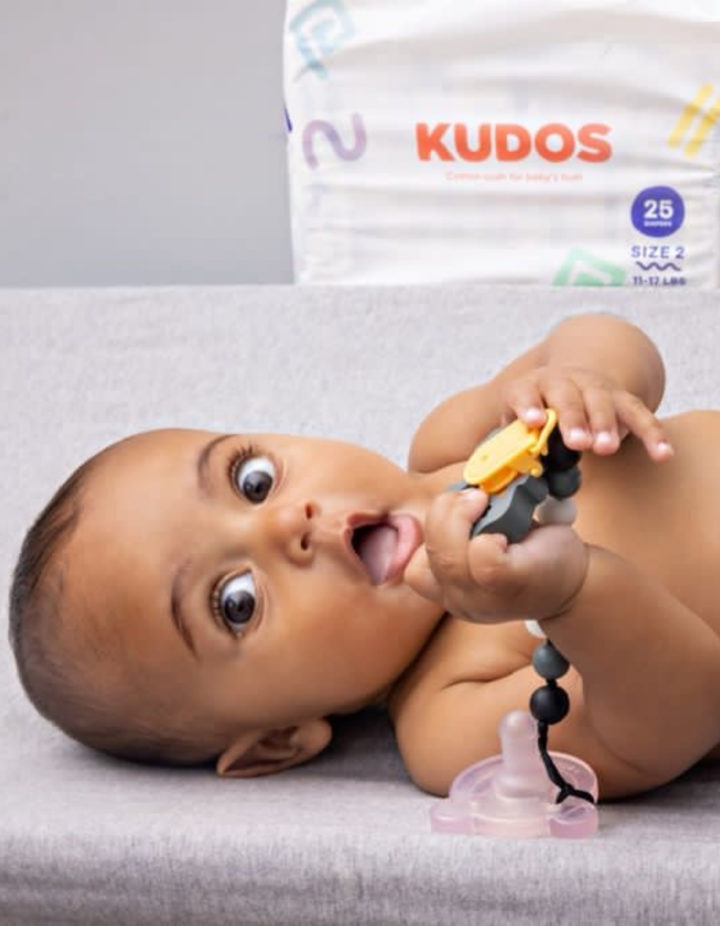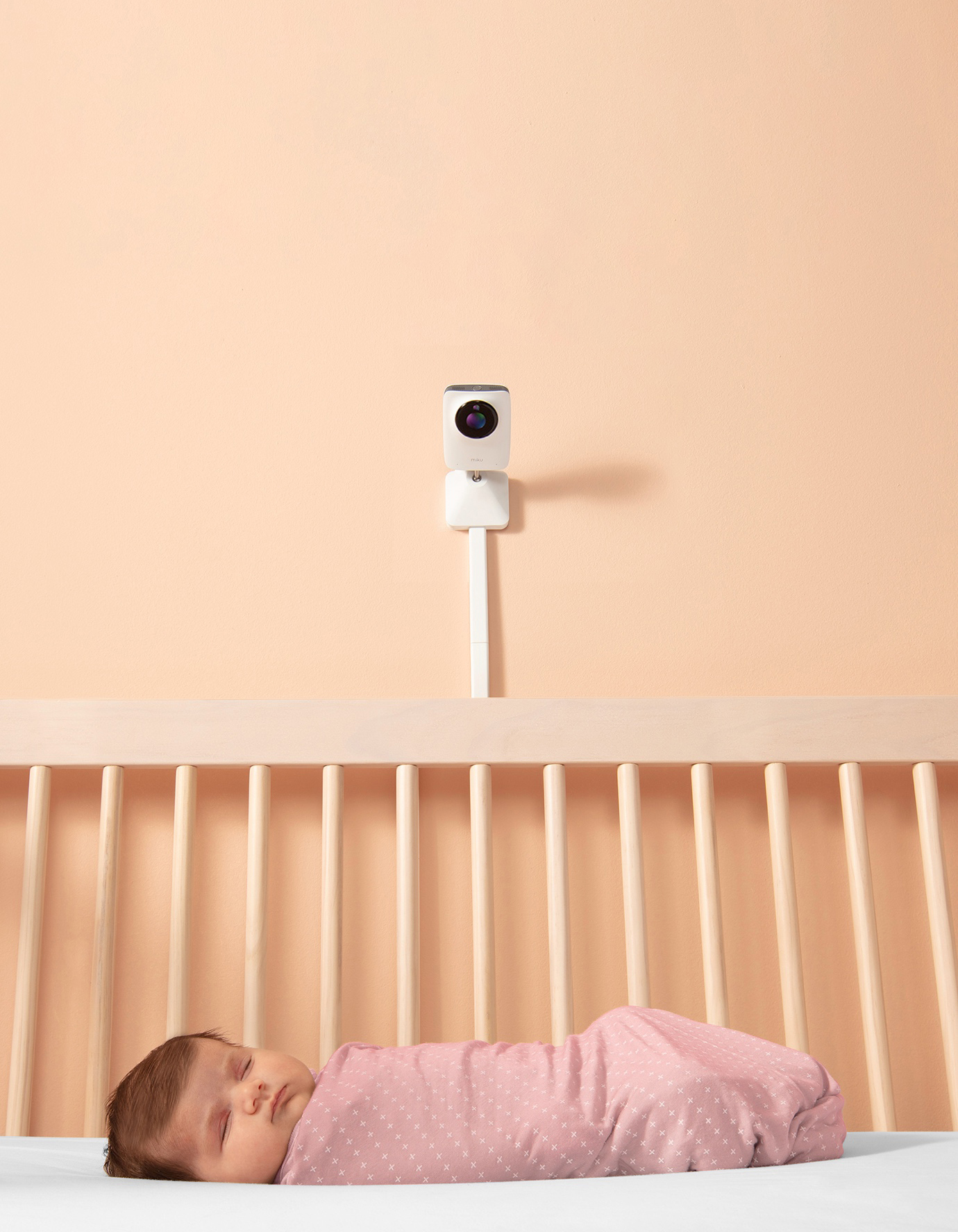How many MIT grads does it take to create the ideal diaper? Does the number “three” sound about right? Kudos is a Boston-based, engineer-designed diaper that is literally trying to change the world “one tush at a time.” Here, we speak to the team at Kudos as well as expert, advisor, and 5-Time Best of Boston pediatric allergist, Dr. Ann Wang-Dohlman, on diapering mistakes you may not know you’ve been making.
Too much plastic.
Did you know that a typical baby spends over 22,000 hours chilling in diapers before potty training? What’s touching their skin MATTERS! Even though it may feel soft, with most disposable diapers (even natural ones) baby’s bum is touching plastic-based materials all day. Plastic can contain harmful VOCs and phthalates that can be absorbed into the skin and disrupt the endocrine and reproductive systems. “That’s why it was so important to us at Kudos to have 100% cotton touching baby’s skin,” said Amrita Saigal, Founder and CEO of Kudos. “It’s naturally soft, hypoallergenic, and the #1 doctor-recommended material for rash and eczema. for rash and eczema. Plus, our cotton is carbon negative.”
Exposure to allergens.
Diaper companies aren’t required to disclose their ingredients, which makes it really hard to tell what’s in a diaper. “It’s important to look for a diaper that’s free of common allergens,” says Dr. Ann, Pediatric Allergist and Kudos advisor. “Chemical irritants like fragrances, latex and formaldehyde and plastic materials like polyethylene and polypropylene, which are present in a lot of diapers, can result in allergic reactions, like diaper rash.”
Short-term thinking.
Just because you don’t see a diaper rash doesn’t necessarily mean all is well when it comes to baby’s skin. Dr. Ann elaborates: “It’s important to note that reactions can develop over time and may contribute to long term inflammatory conditions in one’s respiratory, gastrointestinal, and/or musculoskeletal systems.”
Ignoring the mantra: Ruffles out.
You know, those ruffles on the edge of the diaper that line the inner thighs when you put the diaper on? They’re called leg cuffs and according to Amrita, their primary purpose is to keep liquids and solids (read: pee and poop) inside the diaper by creating a functional but gentle seal around the baby’s thighs. And here’s a big FYI: They should be folded out as you’re putting the diaper on. When they’re folded in, moisture has a much easier time escaping the diaper and finding its way onto your baby’s leg…and, you know, the couch/crib/bed/parent…
Subpar absorbency.
Not opting for diapers with premium absorbency materials is like going to the toilet paper aisle and selecting a ½ ply option. Not. Good. “Absorbency in a diaper comes down to two factors,” Amrita explains. “First, the Acquisition Distribution Layer (ADL) that funnels and distributes moisture away from baby’s bum; and second the inner core of the diaper which ultimately absorbs and holds in all the moisture.” Unlike most disposable diapers, Kudos are designed with patent-pending DoubleDry™ technology that incorporates two plant-based ADL layers of protection versus just one, to provide superior protection. “We also use a premium material in the core of the diaper that can absorb more than 20 times its weight in liquid,” Amrita adds.
Not sizing up early enough, especially overnight.
“My daughter’s diapers used to leak ALL. THE. TIME before I started using Kudos,” Moira Finicane, Kudos’ Head of Marketing tells us. What she eventually learned: ”You don’t have to wait until your baby has reached the recommended weight range to size up.” This is particularly true when it comes to overnight diapering. Though a larger size might be a little big, it’s going to have more absorbency built-in and that can keep your little one leak-free for longer stretches. “As long as I pull the diaper up high, fold the leg cuffs out, and keep the tabs tight, I’ve found that I’m much more likely to have a wake-free night,” Moira attests.
Not enough dry time.
Putting the diaper on before baby is fully dry can be the determining factor in whether baby is cozy or miz. “Moisture, friction, and allergens,” Amrita explains “Those are the three biggest contributors to diaper rash.” “You also want to pay attention to how dry baby’s bum is before you put the diaper on,” Amrita suggests. “If you’re using wet wipes, wait until your baby’s bum has dried completely before putting a diaper back on.” (P.S. The same thing goes before you apply any diaper cream.) The last thing you want to do is trap in unnecessary moisture on sensitive skin.
Not changing the diaper frequently enough.
Regardless of how good your diaper is, if your baby is sitting in poo and pee for an extended period of time, the risk for rash and other conditions like UTIs increases. Getting a diaper with a wetness indicator is a helpful first step in keeping baby fresh and clean. It’s also a helpful tool for monitoring how hydrated your baby is. Generally, doctors recommend changing your baby’s diaper at least every three hours during the day, and as soon as possible after a #2.
Thinking every natural material is created equal.
The cotton used in Kudos diapers, on the other hand, is carbon negative and made with a breakthrough process that utilizes zero chemicals, water, or process heat.” We no longer live in a world where we can ignore the impact of our purchasing decisions. Understanding the environmental impacts of different materials is the first step. For example, “by choosing cotton over bamboo and plastic,” Amrita explains, “you are making a huge environmental impact. It’s not well known, but the process of converting hard, woody bamboo into that soft fabric you feel in baby products can actually be extremely harsh and environmentally toxic. Cotton on the other hand is carbon negative, and the cotton used in Kudos diapers is made with a breakthrough process that utilizes zero chemicals, water, or process heat.” Since no diaper is fully compostable (something the Kudos team hopes to change over time), the focus has been on sourcing and using as many renewable materials as possible.
This article was written in partnership with Kudos.




